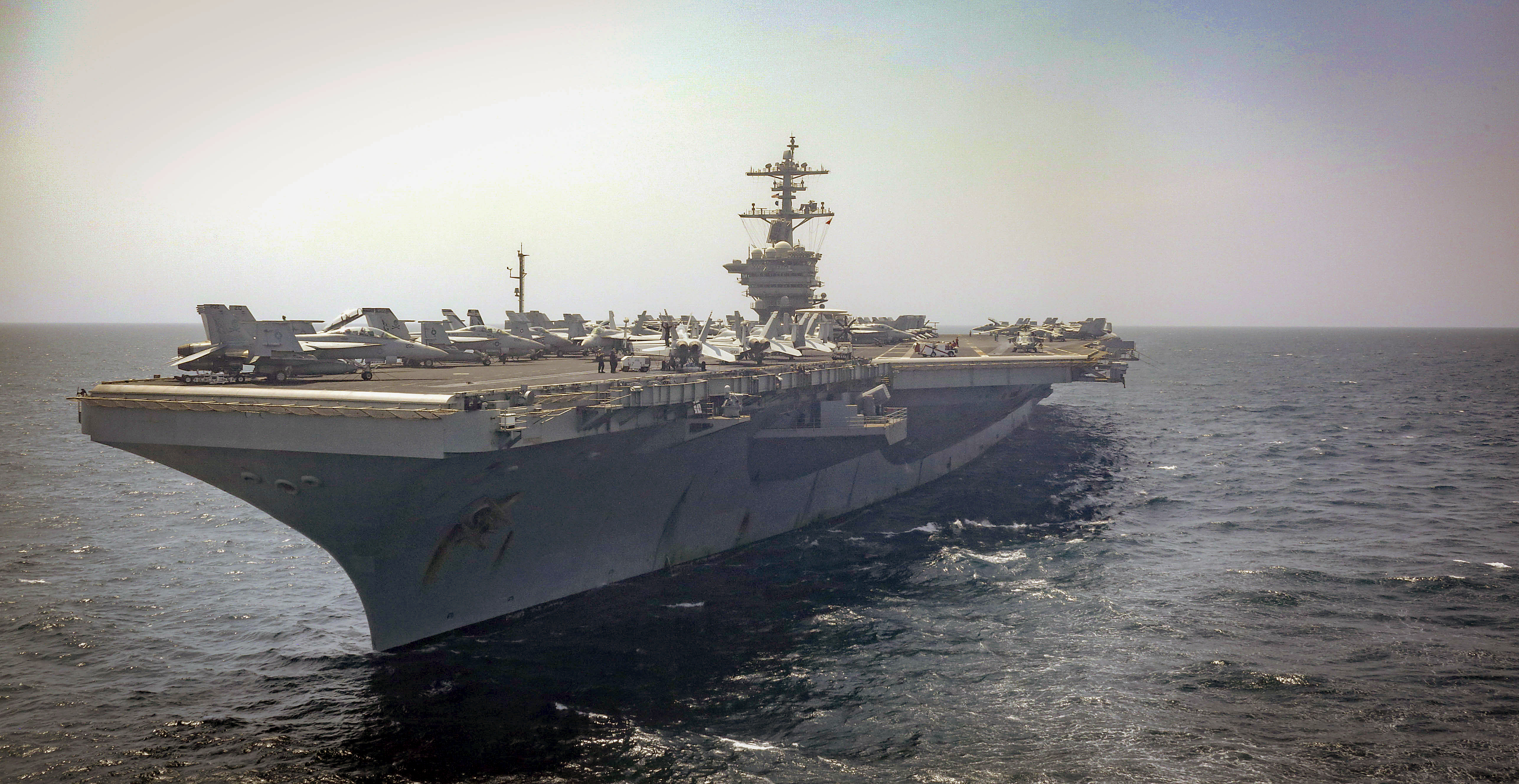
THE PENTAGON – Secretary of Defense Mark Esper has not extended the deployment of the Abraham Lincoln Carrier Strike Group even in the midst of what the Pentagon described as a buildup of forces in Saudi Arabia to defend U.S. forces and interests against Iranian aggression, a Defense Department spokesman told USNI News.
Esper and Chairman of the Joint Chiefs of Staff Gen. Mark Milley briefed reporters Friday and noted that 3,000 forces have been authorized or extended for operations in the Middle East in the last month and that 14,000 have been added since May.
Responding to a request from head of U.S. forces in the Middle East Gen. Kenneth McKenzie, Esper authorized to deploy:
- Two Fighter Squadrons
- One Air Expeditionary Wing (AEW)
- Two Patriot Batteries
- One Terminal High Altitude Area Defense system (THAAD)
The missile defense units in today’s announcement had already been put late last month in “prepare to deploy” status, in what has been an incremental buildup of U.S. assets in U.S. Central Command since the spring.
Among the forces in the CENTCOM area of operations in the Lincoln CSG, which deployed from Norfolk, Va., on April 1 and was rushed to CENTCOM waters in May to respond to what then-National Security Advisor John Bolton referred to as a “number of troubling and escalatory indications and warnings.”
The Lincoln CSG is butting up against the end of its planned deployment, at the end of which it is supposed to continue through the Middle East, into the Pacific and then on to its new homeport of San Diego. If it were to do this within the notional seven-month deployment window, it would be leaving the Middle East any time now.
Esper dodged a question about the CSG’s plans, saying “I’m not going to speak about operational deployments, particularly with regard to assets such as carriers. We are at the early stages of a new concept of employment called dynamic force employment, which would allow us to move systems, like carriers… around the world to allow us operational unpredictability. I think that’s critical so that we keep adversaries off balance.”
Pentagon spokesman Navy Capt. Brook DeWalt told USNI News after the briefing that Esper had not signed a memo extending the Lincoln CSG’s deployment, which typically happens when the Pentagon asks a carrier to stay on deployment longer than seven months. It is unclear if Esper will eventually sign this memo or if the strike group will leave the Middle East and create a gap in carrier presence.
Since May, USS Abraham Lincoln (CVN-72) and its strike group have been largely operating in a small geographical region off the Strait of Hormuz in the Gulf of Oman and the North Arabian Sea with occasional stops in Duqm, Oman.
Its likely replacement, USS Harry S. Truman (CVN-75), is currently pierside undergoing repairs for extensive electrical problems that are likely to extend at least into November.
The buildup of forces in CENTCOM began with intelligence reports that Iran was planning aggressive moves, and has grown as Iran harassed a U.S. warship with a drone, attacked commercial shipping and most recently blew up a Saudi oil facility.
Despite Iranian denials, Esper told reporters today, “the evidence recovered so far proves that Tehran is responsible for these attacks. Iran’s continued malign behavior is part of its larger campaign to destabilize the Middle East and disrupt the global economy. Iran’s attempts to use terror, intimidation and military force to advance its interests are inconsistent with international norms.
“Today I spoke with the Saudi minister of defense to discuss the status of Saudi Arabia’s defensive capabilities and our ongoing efforts to protect our partners from further Iranian aggression. Saudi Arabia is a longstanding security partner in the Middle East and has asked for addition support to supplement their own defenses and defend the international rules-based order. In response to continued threats in the region, I have ordered the deployment to the Kingdom of Saudi Arabia of two additional fighter squadrons and supporting personnel, along with additional Patriot and THAAD air and missile defense batteries,” he continued.
“Taken together with other deployments I have extended or authorized in the last month, this involves about 3,000 United States forces. In fact, in response to Iranian provocations since May, the U.S. has deployed an array of additional capabilities to the region, including airborne early warning aircraft squadrons, maritime patrol aircraft squadrons, Patriot air and missile defense batteries, B-52 bombers, a carrier strike group, amphibious transport dock, unmanned aircraft and engineering and support personnel.”
“This deployment of additional forces to the kingdom of Saudi Arabia is for the purpose of defense of our interests and assets in the region,” Miley told reporters. “Also to reestablish deterrence with respect to Iran in the wake of an attack on Saudi Arabia.”
Milley punctuated the seriousness with which the U.S. sends these forces to deter Iran: “Do not mistake our restraint for weakness,” he warned.





